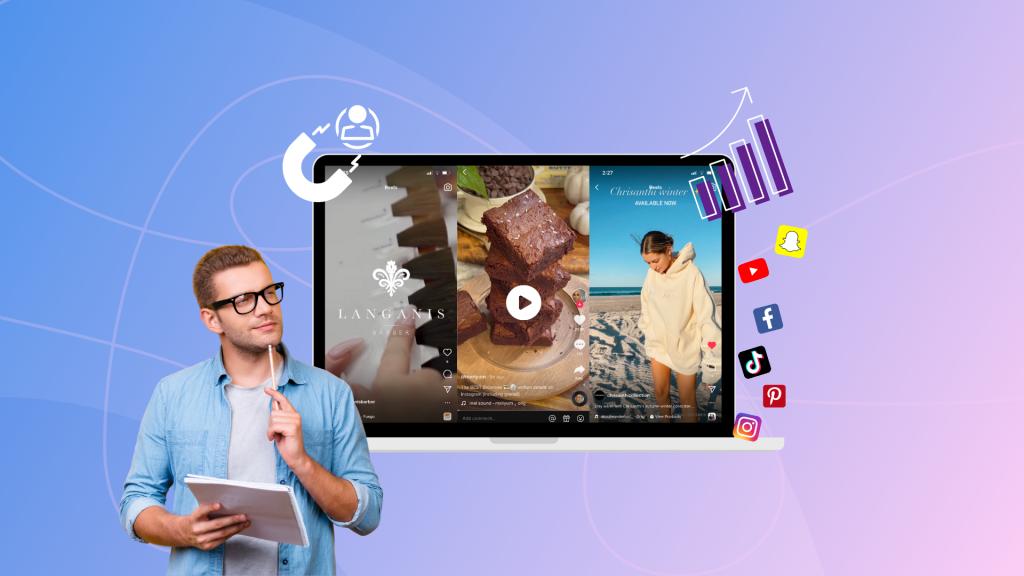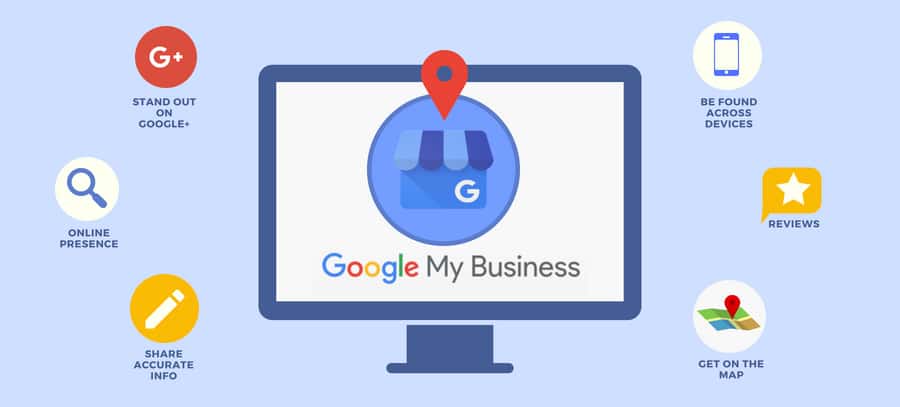Improve Your Local Online Presence with OBCIDO’s Comprehensive Guide to Effective Local SEO Strategies and Best Practices

As a savvy New York web development and digital marketing agency, OBCIDO knows that local businesses looking to attract customers within a specific geographic area must prioritize local SEO. With search engines like Google placing greater emphasis on local search results, optimizing your online presence for local search can significantly boost your local visibility, drive targeted traffic to your business, and increase conversions. To help you achieve this local advantage, we have created a comprehensive guide on essential local SEO strategies, covering techniques, best practices, and actionable tips that will help you improve your local search rankings and drive more customers to your business. In this guide, we’ll explore the fundamentals of local SEO and its importance in driving growth for local businesses. We’ll delve into critical components of a successful local SEO strategy, such as optimizing your Google Business Profile listing, leveraging local keywords, creating locally relevant content, and securing high-quality local backlinks. Additionally, we’ll discuss best practices for managing online reviews and optimizing your website for local search, ensuring that you provide a seamless user experience for potential customers. Whether you’re a local business owner seeking to improve your online visibility or a marketing professional searching for practical local SEO insights, our expert guide serves as a valuable roadmap for enhancing your local search rankings and driving targeted traffic to your business. Embrace the benefits of local SEO with OBCIDO and stay ahead of the competition by tapping into the power of localized search to unlock new growth opportunities for your business. Optimize Your Google Business Profile (GBP) Listing: Boost Your Local Search Presence A well-optimized Google Business Profile listing is a cornerstone of a successful local SEO strategy. To enhance your local search presence, follow these steps to optimize your GBP listing: Claim and Verify Your GBP Listing: Visit the Google Business Profile website and either claim your existing business listing or create a new one. Complete the verification process to establish the legitimacy of your business. Provide Accurate and Up-to-Date Information: Populate your GBP listing with accurate information about your business, including your name, address, phone number, and website (NAP+W). Regularly update this information to reflect any changes. Select the Right Categories: Choose the most relevant primary and secondary categories for your business, ensuring that your listing appears for the appropriate local search queries. Add High-Quality Images: Upload high-quality photos of your business, products, and services to your GBP listing to showcase your offerings and create a visually appealing presence in local search results. Leverage Local Keywords: Reach Your Target Audience with Geo-specific Content Integrating local keywords into your website content and metadata helps search engines understand your business’s location and relevance to local search queries, improving your local search visibility. To effectively use local keywords: Conduct Local Keyword Research: Identify geo-specific keywords relevant to your business using tools like Google Ads’ Keyword Planner. Generate a list of high-traffic local keywords to incorporate into your content and metadata. Optimize On-Page Elements: Incorporate local keywords into on-page elements such as title tags, meta descriptions, header tags (H1, H2, etc.), and image alt text to signal your website’s local relevance to search engines. Create Locally Focused Content: Publish blog posts, articles, and other content that targets local keywords and addresses the needs, interests, and pain points of your local audience. Focusing on Local Content: Build Local Authority and Relevance Creating locally relevant content is an essential component of an effective local SEO strategy. To harness the power of local content marketing, follow these tips: Publish Local News and Updates: Regularly post updates about local events, community initiatives, and other relevant news, positioning your business as an active and informed member of the local community. Offer Locally-Focused Solutions: Create content that addresses the unique challenges and needs of your local audience, showcasing your business’s expertise and commitment to solving local problems. Collaborate with Local Influencers: Partner with local influencers and thought leaders to create co-branded content, host events, or exchange guest blog posts, leveraging their local authority to boost your brand’s credibility and reach. Participate in Local Events: Attend local events, sponsor community programs, or organize workshops to demonstrate your business’s engagement and support for local causes, then create and share content covering these activities. Acquiring Local Backlinks: Establish Local Online Authority and Trustworthiness Securing backlinks from local websites can significantly improve your local search rankings by establishing your business as a trusted and authoritative source within the local online community. To acquire local backlinks: Collaborate with Local Businesses: Establish relationships with local businesses and explore co-marketing opportunities, such as guest blogging or online event sponsorships, to secure backlinks from their websites. Engage with Local Online Communities: Participate in local online forums, social media groups, and community websites, sharing helpful advice and insights while linking back to relevant content on your website. Get Listed on Local Directories: Submit your business information to local online directories, ensuring consistency in your NAP+W data across listings to contribute to your local backlink profile. Leverage Local PR Opportunities: Connect with local media outlets and bloggers, pitching news stories or expert insights to secure coverage and backlinks from authoritative local sites. Conclusion Local SEO strategies are essential for businesses looking to improve their local online visibility and drive targeted traffic from a specific geographic area. By optimizing your Google Business Profile listing, leveraging local keywords, creating locally relevant content, and acquiring local backlinks, you can boost your local search rankings, attract more customers, and grow your business. OBCIDO, a New York-based web development and digital marketing agency, can help you develop and implement an effective local SEO strategy tailored to your unique needs and goals. Our team of local SEO experts can guide you through each step of the process, ensuring that your business remains ahead of the competition in local search results. Ready to enhance your local online visibility and drive targeted traffic to your business? Contact OBCIDO’s team of New York SEO experts
Transform Your Small Business with OBCIDO’s Comprehensive Guide on Effective Email Marketing Strategie

In the constantly evolving digital landscape, email marketing remains a tried-and-true strategy for fostering customer engagement, driving brand visibility, and achieving measurable results. With a stunning return on investment (ROI) of up to $42 for every $1 spent, email marketing offers small businesses a cost-effective and impactful method to connect with their target audience, build lasting relationships, and sustain business growth. As a savvy New York web development and digital marketing agency, OBCIDO is dedicated to supporting small businesses in harnessing the remarkable power of email marketing, providing tailored solutions and insights that drive success in the digital age. In this comprehensive guide, we will take you on a journey through the world of email marketing, exploring proven strategies, compelling benefits, and best practices that can help your small business thrive in an increasingly competitive digital environment. The potential of email marketing for small businesses cannot be overstated, so read on and learn how to leverage this powerful marketing channel to secure a competitive advantage, inspire customer loyalty, and drive sustainable growth. Email Marketing Strategies: Personalization, Automation, and Segmentation To maximize the impact of your email marketing efforts, consider implementing these powerful strategies: Personalization: Enhance the customer experience by personalizing your email content according to subscribers’ preferences, behaviors, and interests. Use elements such as personalized subject lines, greetings, and curated product recommendations to make each email feel tailored to the individual recipient. Automation: Streamline and optimize your email campaigns by automating various processes, including welcome emails, abandoned cart reminders, and post-purchase follow-ups. Email automation allows you to nurture leads, retain customers, and maintain brand engagement without expending unnecessary time and effort. Segmentation: Improve the relevancy and effectiveness of your email campaigns by segmenting your subscriber list into groups based on factors like demographics, purchase history, and engagement patterns. By targeting specific segments with tailored content, you can boost open rates, click-through rates, and overall campaign performance. Mobile-Friendly Design: Ensure that your email campaigns are accessible and visually appealing on mobile devices. Optimize the layout, font sizes, and images to provide a seamless and enjoyable experience for mobile users. With the increasing prevalence of mobile email usage, this step is crucial for reaching and engaging a wider audience. By incorporating these strategies into your email marketing approach, your small business can create compelling, customized content that resonates with your target audience and drives results. Benefits of Email Marketing: Cost-Effectiveness, Measurable Results, and Enhanced Customer Loyalty Email marketing offers numerous benefits for small businesses, including cost-effectiveness, measurable results, and enhanced customer loyalty: Cost-Effectiveness: Compared to other marketing channels, email marketing is an affordable and efficient way to reach your target audience. The minimal financial investment required, coupled with the impressive potential ROI, makes email marketing a worthwhile endeavor for small businesses. Measurable Results: The performance of email campaigns can be easily tracked, analyzed, and optimized using various metrics, such as open rates, click-through rates, and conversion rates. This data-driven approach empowers small businesses to make informed decisions and adjust their strategies for maximum impact. Enhanced Customer Loyalty: Regular, valuable email communication helps to deepen customer relationships and promote brand loyalty. By delivering timely, personalized, and engaging content to your subscribers, you can solidify their connection to your brand and encourage repeat purchases. Leveraging the many benefits of email marketing can position your small business for success and growth in the competitive digital space. Best Practices for Email Marketing: Enticing Subject Lines, Mobile Optimization, and A/B Testing Following best practices is essential for the success of your email marketing endeavors. Here are three key components of an effective email campaign: Enticing Subject Lines: Your subject line is the first impression subscribers have of your email, which makes it crucial for driving opens and engagement. Craft compelling, curiosity-inducing subject lines that convey value and relevance to your audience. Mobile Optimization: With a growing number of consumers accessing their email on mobile devices, it’s essential to optimize your email content for mobile viewing. Ensure that your emails are responsive, easy to read, and quick-loading on smaller screens. A/B Testing: Continuously refine and improve your email campaigns by conducting A/B tests on various elements, such as subject lines, send times, and content layouts. By testing and analyzing different variables, you can determine the most effective approaches for engaging your audience and driving conversions. Adhering to these best practices will improve your email marketing performance and help to drive meaningful results for your small business. Different Types of Email Marketing Campaigns: Newsletters, Promotional Offers, and Educational Content Diversifying the types of email campaigns you send can help achieve various business goals, catering to your audience’s diverse needs and preferences. Here are three popular email marketing campaign types: Newsletters: Regular newsletters keep your subscribers informed about the latest news, developments, and updates from your business. They offer an excellent opportunity to maintain brand engagement, convey your unique brand voice, and foster a sense of community among your customers. Promotional Offers: Drive sales and incentivize purchases by sending targeted promotional offers to your subscribers. Announce discounts, limited-time promotions, or exclusive deals to generate excitement and encourage immediate action. Educational Content: Add value to your subscribers’ inboxes by providing educational content related to your products or services. Share tips, tutorials, and industry insights that can help customers maximize their experience with your brand and position your business as an authoritative resource in your niche. By utilizing various types of email campaigns, you can keep your subscribers engaged and interested in your content, ultimately driving tangible results for your small business. Conclusion Email marketing stands as a powerful and cost-effective solution for small businesses seeking to connect with their target audience, foster customer loyalty, and drive sustained growth. Through strategic implementation and alignment with industry best practices, your small business can harness the full potential of email marketing and achieve enduring success in the digital age. At OBCIDO, our team of seasoned marketing
The Art of Storytelling: Crafting Compelling Brand Narratives with OBCIDO

In an era of information overload and fleeting attention spans, the ability to tell a captivating story is paramount to your brand’s success. Storytelling is an age-old art form that transcends digital boundaries, allowing businesses to connect with their target audience on a deeper level and drive brand engagement. As a savvy New York web development and digital marketing agency, OBCIDO understands the critical role of storytelling in the digital landscape and helps brands craft compelling narratives that resonate with their audience. In this comprehensive article, we will explore the art of storytelling in the context of digital marketing and provide a step-by-step guide to creating captivating brand narratives that inspire action and loyalty among your target audience. Drawing from OBCIDO’s expertise in digital marketing and web development, we will demonstrate the power of storytelling and offer valuable insights to help your brand thrive in the digital age. The Power of Storytelling in Digital Marketing Storytelling is an essential tool in digital marketing, allowing businesses to forge emotional connections with their audience, establish their brand identity, and present their products or services in a relatable context. A well-crafted narrative evokes emotions, sparks curiosity, and fosters trust, driving customer engagement and loyalty. According to a study conducted by Headstream, 55% of consumers are more likely to buy from a brand that leverages storytelling in their marketing activities (source: [Forbes](https://www.forbes.com/sites/quora/2018/07/18/the-science-of-storytelling-in-marketing/?sh=580aef972aa9)). By weaving captivating tales, brands can foster a sense of authenticity and empower their target audience to engage, resonate, and ultimately, convert. Key Elements of a Captivating Brand Narrative To create an engaging brand narrative, businesses must understand and incorporate the following storytelling elements: – Establish Relatable Characters: Showcase your brand or product as the protagonist, with customers as the supporting cast. Ensure that your characters are relatable and that your audience can see themselves in their shoes. – Present a Conflict: Introduce a problem or challenge that your target audience faces, stirring their emotions and painting a vivid picture of the issue. – Offer a Resolution: Present your product or service as the resolution to the conflict, demonstrating how it can help your target audience resolve their problems or challenges. – Create Emotional Appeal: Narratives that evoke emotions leave lasting impressions on the audience. Craft an emotionally resonant story to foster connections with your target market and create a memorable brand persona. – Maintain Consistency: Ensure that your brand narrative is consistent across all communication channels, reinforcing your brand identity and maintaining audience engagement. Steps to Crafting a Compelling Brand Story To deliver an engaging brand story, follow these essential steps: Define Your Purpose: Identify your brand’s purpose, mission, and values to create a robust foundation for your narrative. It is crucial that your story aligns with these core principles, providing a framework that guides the development of your narrative. Understand Your Audience: Conduct comprehensive research to gain insights into your target audience’s needs, preferences, and pain points. Use this information to craft a narrative that resonates with your audience and addresses their most pressing concerns. Develop a Consistent Brand Voice: Establish a unique and recognizable brand voice that captures the essence of your brand and reflects its personality. Ensure that your storytelling tone remains consistent across all communication channels. Use Visuals Wisely: Integrate memorable visuals into your narrative by leveraging video, images, and infographics, as well as ensuring that your website and social media profiles echo your overall story. Encourage User-Generated Content: Invite your audience to participate in and contribute to your storytelling journey by sharing their experiences and engaging with your brand. Successful Brand Storytelling Examples Inspiration can be drawn from brands that have mastered the art of storytelling in their marketing campaigns. Here are a few real-world examples that demonstrate the power of brand storytelling in action: – Nike: Nike’s “Just Do It” campaign transcends beyond a simple tagline, presenting powerful athlete stories that inspire and motivate their target audience, fostering an emotional connection between the brand and its customers. – Airbnb: Airbnb’s storytelling approach focuses on the experiences of hosts and guests, creating a sense of authenticity and showcasing the unique possibilities that staying in an Airbnb property can offer. – Apple: Apple has a long-standing history of impactful storytelling, positioning their products as tools for creativity and self-expression. Their campaigns often highlight individual creators or document landmark moments in technology and culture. Leveraging Digital Channels to Amplify Your Brand Story To maximize the impact of your brand narrative, reach your audience through multiple digital channels, and maintain continuous engagement. Harness and utilize popular platforms such as: – Social Media: Use social media platforms like Instagram, Facebook, and Twitter for storytelling opportunities through images, videos, and written content. Tailor your narrative for each platform to optimize exposure and engagement. – Content Marketing: Craft informative and engaging blog posts, case studies, and whitepapers that incorporate your brand story, offer valuable content, and effectively reinforce your brand narrative. – Email Marketing: Incorporate storytelling elements into email campaigns to personalize your approach, build connections with your audience, and maintain a consistent brand voice. Measuring the Impact of Your Brand Storytelling Tracking and evaluating the results of your storytelling efforts is crucial to understanding its impact on your overall digital marketing strategy. Key performance indicators (KPIs) to measure your brand storytelling success include: – Engagement Metrics: Monitor social media likes, shares, comments, and website engagement (page views, average time on page, etc.) to determine the effectiveness of your narrative. – Conversion Metrics: Track conversion rates, such as lead generation, email opt-ins, and sales, to gauge the influence of your storytelling on the customer journey. – Brand Sentiment: Analyze the sentiment and tone of online conversations and customer reviews to understand how your storytelling efforts have shaped your brand reputation. – Audience Growth: Monitor growth in social media followers, email subscribers, and overall website traffic to evaluate the long-term impact of your brand narrative on customer acquisition and
The Rise of Video Marketing: Strategies for Success in 2024

In today’s fast-paced digital landscape, video has emerged as one of the most engaging and effective marketing tools, capturing the hearts and minds of audiences across the globe. As a savvy New York web development and digital marketing agency, OBCIDO recognizes the immense potential of video marketing and is dedicated to helping businesses capitalize on this powerful medium to achieve success in 2024 and beyond. In this comprehensive guide, we’ll explore the meteoric rise of video marketing and its transformative impact on the world of digital marketing. Drawing on OBCIDO’s industry experience and insights, we’ll discuss the latest trends, forecasts, and strategies that businesses should adopt to achieve video marketing success in 2024. From leveraging emerging video formats and platforms to optimizing content for maximum exposure, we’ll provide the tools and knowledge you need to create winning video marketing campaigns that captivate your audience, boost brand visibility, and drive revenue growth. Stay ahead of the competition and make 2024 your most successful year yet with OBCIDO’s expert advice on video marketing strategy. Understanding the Meteoric Rise of Video Marketing The rapid ascent of video marketing in recent years can be attributed to several factors. Foremost among them is the increasing consumption of video content by users, fueled by technological advancements, high-speed internet, and the proliferation of mobile devices. Studies have found that users watch an average of 100 minutes of video daily, with this number projected to increase further in the coming years. Furthermore, video marketing has gained traction due to its effectiveness in driving engagement, conversions, and ROI. According to a 2021 report by Wyzowl, 86% of businesses use video as a marketing tool, with 93% of marketers claiming that video has landed them new customers. Forecasting Video Marketing Trends in 2024 To succeed in video marketing in 2024, it’s crucial to stay informed about emerging trends and incorporate them into your strategies. Here are some key developments to watch: – Live Streaming: Live video streaming on platforms like Facebook, Instagram, and YouTube will continue to grow in popularity, offering opportunities for real-time engagement and interaction between brands and audiences. – Short-Form Video: Platforms such as TikTok and Instagram Reels have revolutionized short-form video content, and this trend is set to persist, obliging marketers to create bite-sized, shareable videos that cater to short attention spans. – Virtual and Augmented Reality: As VR and AR technology becomes more accessible, immersive video experiences will gain traction in marketing, providing unique opportunities to showcase products and engage audiences in novel ways. – Video-led E-commerce: With platforms like Instagram and Pinterest incorporating shoppable video features, video will play an increasingly vital role in e-commerce, bridging the gap between content and conversion. Embracing the Power of Storytelling Storytelling remains a cornerstone of successful video marketing, eliciting emotional responses and forming genuine connections with audiences. To create compelling narratives in your videos, consider these strategies: – Focus on the Customer Journey: Craft stories that revolve around your customers’ needs, aspirations, and challenges, positioning your brand as a solution provider. – Showcase Real Experiences: Investor authenticity by sharing genuine customer experiences, testimonials, or case studies that resonate with your target audience. – Teach and Inspire: Educate and inspire your audience through how-to videos, behind-the-scenes footage, or thought leadership content that adds value and positions your brand as an expert in your field. Platform-Specific Video Marketing Tactics As various social media platforms sport unique features, algorithms, and audiences, businesses should adapt their video marketing strategies accordingly: – Facebook: Utilize Facebook Live to broadcast events, Q&As, or product launches, and create captivating video ads targeted at specific audiences using Facebook’s detailed targeting tools. – Instagram: Produce visually appealing content for Instagram’s feed and Stories, while leveraging the power of Instagram Reels and IGTV for longer and shorter-form videos, respectively. – YouTube: Optimize your YouTube channel and videos for search through proper keyword usage, eye-catching thumbnails, and engaging titles and descriptions, and collaborate with other creators to expand your audience reach. – TikTok: Embrace TikTok’s unique culture by creating fun, authentic, and viral content that resonates with the platform’s predominantly youthful audience and embraces trends, challenges, and popular hashtags. Measuring and Optimizing Your Video Marketing Efforts Ensuring the effectiveness of your video marketing campaigns hinges on continual monitoring, analyzing, and refining your content and strategies. Here are key performance indicators and optimization tactics to consider: – Track Vital Metrics: Gauge your campaign’s success by tracking metrics like views, impressions, engagement rates, click-through rates, conversion rates, and audience retention rates to identify what resonates with your audience and what needs improvement. – Optimize for Mobile Viewing: Design videos with a mobile-first mindset, ensuring that your content is easily consumable on smaller screens and maintains its visual and audio quality across various devices. – A/B Test Variations: Test different video formats, styles, lengths, and CTAs to determine which generate the best results, and glean insights from your audience’s preferences and behaviors. – Utilize Video Analytics Tools: Leverage video analytics tools like YouTube Analytics, Vimeo Analytics, or third-party software such as Wistia or Vidyard to gain in-depth insights into your video performance, audience demographics, and more. Armed with these insights and strategies, your business can fully capitalize on the tremendous potential of video marketing in 2024. By embracing upcoming trends, crafting compelling stories, adapting your approach to various social media platforms, and continually measuring and optimizing your efforts, you’ll be well-equipped to generate lasting impact and achieve unprecedented success in the realm of video marketing. Securing Video Marketing Success with OBCIDO The rise of video marketing illuminates exciting possibilities for businesses striving to create captivating content, engage with target audiences, and drive growth. By staying abreast of emerging trends, building powerful narratives, tailoring your approach to various platforms, and optimizing your video marketing endeavors, you’ll be well-positioned to dominate the digital marketing landscape in 2024. OBCIDO, New York’s leading web development, and digital marketing agency is here to help you navigate the ever-evolving world
Creating a Winning Digital Marketing Strategy for Small Businesses

In today’s highly digital world, small businesses need to implement strong digital marketing strategies to stay ahead of the competition and achieve long-term success. As a savvy New York web development and digital marketing agency, OBCIDO specializes in helping small businesses thrive in the online space by creating tailored digital marketing strategies that yield impressive results. This comprehensive guide offers valuable insights and actionable tips on how to create a winning digital marketing strategy for small businesses. Leveraging OBCIDO’s deep expertise and industry experience, you’ll learn best practices for harnessing the power of SEO, content marketing, social media, email marketing, and much more, all while maintaining a solid digital presence and growing your brand. With the right strategy in place, small businesses can experience significant growth, stronger customer relationships, and boosted online visibility. Get ready to transform your digital marketing efforts and set your business up for greater success in today’s increasingly competitive online landscape. Establish Clear Digital Marketing Objectives The first step in crafting a winning digital marketing strategy for small businesses is setting clear, well-defined goals that align with your overall business objectives. These objectives will serve as the foundation for your entire strategy, guiding your digital marketing efforts and ensuring that they support your company’s growth. Common digital marketing objectives for small businesses might include: – Increasing website traffic – Boosting brand awareness – Generating more leads – Increasing sales and revenue – Enhancing customer engagement and loyalty Conduct Thorough Market and Competitor Research Understanding your target market is crucial for creating an effective digital marketing strategy. Conducting thorough market and competitor research will provide you with insights into your audience’s preferences, expectations, and online behaviors, as well as reveal opportunities and areas where your business can outperform its competitors. To do this, consider the following steps: – Analyze your target audience demographics: Identifying your ideal customer segments, including age, gender, location, and income bracket, will help shape your marketing efforts and ensure you’re appealing to the right group of people. – Research customer needs and pain points: Understanding your customers’ primary needs, desires, and challenges will enable you to create valuable content and solutions that specifically address those concerns. – Study your competitors’ digital marketing strategies: Examining your competitors’ approaches to online marketing will help you pinpoint gaps in their tactics, discover new opportunities, and inform your own digital marketing decisions. Optimize Your Website for User Experience and SEO Your small business’s website is the hub of your digital marketing strategy, and it’s essential to prioritize both user experience (UX) and search engine optimization (SEO) to ensure optimal performance. A well-designed, user-friendly website will help attract and retain more visitors, while strong SEO practices can help improve your search ranking and drive organic traffic. To optimize your website, consider the following: – Design for Responsiveness: Ensure your website is mobile-friendly and displays correctly on various devices and screen sizes. – Improve Site Speed: A fast-loading website enhances the user experience and can improve your search ranking. Use tools like Google PageSpeed Insights and GTmetrix to identify areas of improvement in your site’s performance. – Implement SEO Best Practices: Follow on-page and off-page SEO best practices, including proper keyword usage, quality content creation, and obtaining backlinks from reputable sources to boost your site’s visibility in search results. Create and Share Valuable Content Strategically Content marketing is a critical component of any successful digital marketing strategy, as it enables small businesses to build authority, engage with their audience, and improve organic search rankings. To harness the power of content marketing for your small business, make sure to: – Develop a content strategy: Outline the types of content you’ll create and the platforms you’ll share them on, targeting content towards specific segments of your audience based on demographics, interests, and behaviors. – Create high-quality, relevant content: Focus on producing original, valuable content that addresses your audience’s pain points, showcases your expertise, and supports your overall digital marketing objectives. – Utilize various content formats: Incorporate a mix of content formats, such as blog posts, videos, infographics, podcasts, and social media updates, to cater to multiple user preferences and maintain engagement. Leverage the Power of Social Media Marketing With billions of users worldwide, social media platforms offer immense opportunities for small businesses to expand their reach and engage with potential customers. To capitalize on social media marketing, it’s essential to focus on the right platforms for your audience and share engaging, informative content. To develop an effective social media strategy, consider the following: – Choose relevant platforms: Research your target audience to determine which social media platforms they frequent and focus your marketing efforts on the sites that will yield the most return. – Create a content calendar: Plan your social media posts and develop a content calendar to streamline your posting process and maintain a consistent online presence. – Engage with your audience: Respond to comments, answer questions, and actively participate in conversations on your chosen platforms to deepen connections with your audience and improve your brand’s trustworthiness. Implement Email Marketing to Nurture Customer Relationships Email marketing remains one of the most cost-effective and high-ROI digital marketing channels for small businesses. With a strategic approach to email marketing, you can foster stronger relationships with customers, drive repeat business, and build brand loyalty. To maximize your email marketing strategy, consider the following: – Grow your email list: Encourage site visitors to sign up for your email newsletter by offering valuable content and incentives, such as discounts or exclusive offers. – Segment your list: Divide your email list into segments based on user behaviors, preferences, and demographics to provide more personalized and relevant messaging. – Optimize email content and design: Craft compelling subject lines, engaging email copy, a visually appealing design, and clear calls to action (CTAs) to drive engagement and conversions. Creating a winning digital marketing strategy for your small business involves a multifaceted approach that includes setting clear objectives, conducting market research, optimizing your website, focusing on content
8 Essential Google Ads Tips by OBCIDO to Boost Your Revenue

8 Essential Google Ads Tips by OBCIDO to Boost Your Revenue A well-crafted PPC campaign can be a game-changer for advertisers, driving conversions and revenue. There’s no better way to reach potential customers than when they’re actively searching on platforms like Google and Bing, expressing their precise needs. However, the pay-per-click model means that a poorly managed PPC campaign can cost more than it’s worth. Audience targeting and messaging are unique to every business, but some fundamental tactics consistently deliver results in PPC, regardless of your industry. While there’s no one-size-fits-all solution for a successful PPC campaign, there are numerous levers you can pull to enhance your outcomes. Here are eight vital elements that are often overlooked but can make a significant difference in optimizing your PPC campaigns, ultimately leading to increased profits. Crafting Relevant Landing Pages One frequently overlooked aspect of paid search is the landing page. Amidst all the adjustments made within the paid search platforms, from bid tweaking to ad copy testing, it’s easy to forget what happens after a user clicks on an ad – they arrive at your website! The primary goal of PPC marketing is to secure a sale. While a successful PPC ad can drive qualified leads to your landing page, that’s only the initial step. Your landing page’s job is to convert those prospects into paying customers. To optimize your landing pages for PPC conversions, ensure your ad’s message aligns seamlessly with your landing page’s message. Consistency between keywords, ad copy, and landing pages can boost click-through and conversion rates while reducing your cost per click (CPC). The desired outcome is more revenue while maximizing your budget. Harness the Power of Negative Keywords One of the most potent tools at your disposal to maintain the integrity of your Google Ads and Microsoft Ads campaigns is the use of negative keywords. Both platforms allow you to specify keywords that aren’t a good fit for your product or service. By informing Google about what your product isn’t, you prevent your ads from appearing on keyword searches that don’t match your desired audience. For instance, if you’re an apartment management company catering to students, you can exclude terms like “family” and “cheap” to avoid unqualified traffic. It’s as crucial to inform Google what your product or service isn’t as it is to describe what it is. Negative keywords can be added at the campaign level, or you can fine-tune them by adding specific keywords to particular ad groups. Master Keyword Match-Types PPC advertising relies on user intent through keywords, and the keywords you use and their modifiers play a pivotal role in your campaign’s success. There are four keyword match types: Broad: This casts the widest net, matching searches with any words in any order, including synonyms. Broad Match Modified: Similar to Broad Match, but with more control, ensuring all terms appear in the search query. Phrase Match: Displays your ad when the search query exactly matches your specified phrase. Exact Match: This shows your ad for exact search queries, with some flexibility for misspellings or variations. Each match type involves trade-offs between impressions, relevancy, and cost. Choosing the right one depends on your campaign’s goals. Adjust Keyword Match Types Over Time When launching a new Google or Microsoft Ads campaign, it’s wise to begin with several ad groups centered around related keywords. Starting with Broad Modified match types provides control and data collection opportunities. Over time, your focus may shift toward a blend of Modified Broad, Phrase, and Exact Match keywords as you gather data on what converts best. Promising search queries can be upgraded to more exact match types, while Modified Broad continues to cast a wider net to discover new opportunities. Utilize Every Available Ad Content Expanded Text Ads (ETAs) have significantly impacted Google Ads since their introduction in July 2016. ETAs offer more space for relevant content, allowing PPC managers to provide comprehensive information about products or services. To enhance your ad performance, ensure that you complete all available information fields, including the final URL, headlines, paths, and description lines. This provides a rich user experience and maximizes the effectiveness of your ads. Leverage Ad Extensions Ad Extensions are an essential part of the customer experience, offering additional information to your customers and enhancing ad performance. Types of ad extensions include Sitelinks Extensions, Callout Extensions, Structured Snippets, Call Extensions, and Location Extensions. By utilizing ad extensions effectively, you can tell your brand’s story better and provide valuable information to your customers, ultimately boosting ad performance. Optimize Bids for Geotargeting Geographic targeting can be a powerful strategy, directing your marketing budget towards specific locations where your audience is most engaged. Even businesses not tied to physical locations can benefit from geotargeting based on seasonality, weather, and user needs. By adjusting bids based on geographic performance, you can optimize your PPC campaigns, save money in certain areas, and increase bid adjustments in regions likely to generate conversions. Embrace Mobile Advertising Mobile devices play a crucial role in user interactions, and mobile-focused campaigns can provide an excellent opportunity to engage your audience on their preferred devices. Review your conversions by device to identify opportunities for mobile-only campaigns. Mobile-only campaigns can be created by duplicating existing campaigns and adjusting bid modifiers for mobile devices. Focus on click-to-call extensions to cater to mobile users. In Conclusion Google Ads is a valuable investment for businesses seeking to increase their revenue. As you pay for each click, it’s vital to optimize the entire user experience and drive conversions effectively. Implement the suggestions above in your PPC campaigns, and you’ll likely see increased profits through qualified traffic and improved sales.
Google My Business Essentials: Connecting Your Business to the World

In the digital marketing landscape, Google My Business (GMB) emerges as a vital free tool, designed to boost the local visibility of businesses in Google Search results. This guide explores the key facets of GMB and its role in enhancing local reach. Optimizing Local SEO GMB empowers businesses to enhance their local SEO, securing higher search rankings for relevant local queries. This optimization levels the playing field, enabling smaller enterprises to compete effectively against more prominent online players while expanding their accessibility to local customers. The Approach to Local Visibility In a digital age where most customer journeys begin with a Google Search, establishing a strong presence on relevant search terms is critical. Securing a prominent position in local search results can significantly impact a business’s success. Visibility on Google Search and Maps GMB listings prominently feature between Google Ads and organic search results on Google Search. Your business’s name-based searches showcase the listing on the right, on both desktop and mobile devices. Being discoverable on Google Maps expedites customer contact, ultimately driving sales. Leveraging Google My Business Reviews Online reviews wield significant influence, with 93% of customers acknowledging their impact. Positive reviews act as a catalyst for generating free and positive visibility in search engines. Managing Reviews Efficiently Collecting and managing online reviews can be streamlined through GMB. The platform offers a straightforward process for customers to leave reviews directly on Google Search. Integrating review collection into your sales funnel optimizes the process. Displaying Crucial Business Information Your GMB listing ensures your business information is always up to date. Customers searching for your services can access crucial details conveniently. Effective Communication and Marketing GMB posts offer a direct way to engage with customers on Google Search. Monitoring competitors’ posts helps craft compelling content. Unlocking GMB’s Power Published GMB posts appear in your profile, bolstering clickthrough rates to your website. Updating posts as they expire and repurposing content from other platforms enhances visibility. A Cost-Effective Tool for Local Growth GMB is highlighted as a cost-effective addition to your marketing strategy. It offers free exposure and enables direct engagement with customers. In Conclusion To maximize GMB benefits: Keep business information updated. Choose the right category. Specify delivery services. Verify your address. Provide comprehensive product and service information. Include relevant keywords. Add compelling images. Manage and respond to reviews. Use GMB Insights. Explore Google Ads for local promotion. In summary, GMB is a tool that every company should embrace, regardless of size. It offers numerous benefits, and businesses that optimize their profiles can gain more local reach and sales. Local marketing, especially local SEO, can reduce online marketing expenses or boost ROI.
